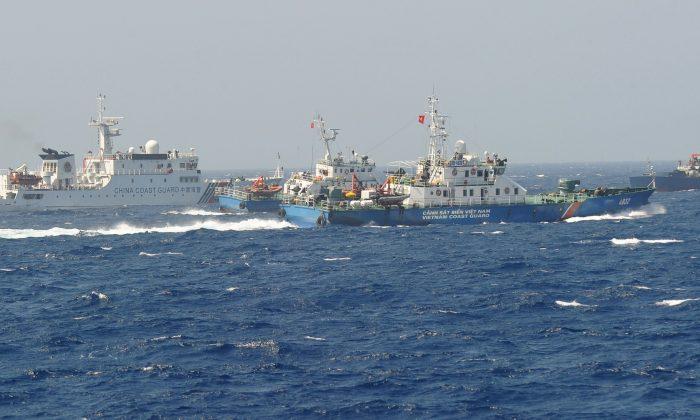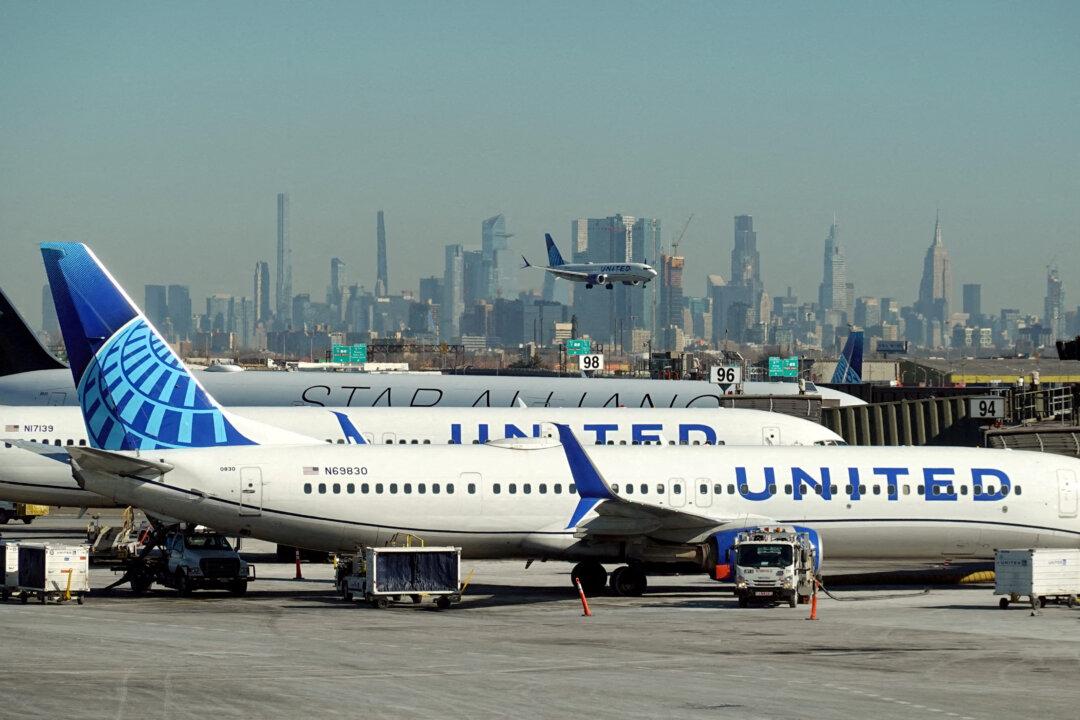HANOI—China’s construction of a new platform in a remote part of the disputed South China Sea is a serious violation of Vietnam’s sovereignty, its foreign ministry said on Nov. 22.
The platform sits on the strategically located Bombay Reef and was revealed in satellite images published this week by U.S. think tank Center for Strategic and International Studies (CSIS), which concluded the structure could be used for military purposes.
“The fact that China continues its activities in Vietnam’s Paracels has seriously violated Vietnam’s sovereignty on this archipelago,” foreign ministry spokeswoman Nguyen Phuong Tra told a Nov. 22 news conference. “We vehemently object to this action by China and demand that China stop immediately, not repeat similar activities, and respect Vietnam’s sovereignty in accordance with international law.”
CSIS said the satellite images showed that Bombay Reef, an atoll in the disputed Paracel Islands chain, was topped with a radome (a dome usually for protecting radar antenna) and solar panels.
“The development is interesting given Bombay Reef’s strategic location, and the possibility that the structure’s rapid deployment could be repeated in other parts of the South China Sea,” the organization said in a statement on Nov. 20.
“The reef is directly adjacent to the major shipping lanes that run between the Paracels and the Spratly Islands to the south, making it an attractive location for a sensor array to extend Chinese radar or signals intelligence collection over that important sea lane,” CSIS said.
Malaysia, the Philippines, Taiwan, and Brunei also have competing claims in the South China Sea, which is known in Vietnam as the “East Sea.”
The strategic waterway is claimed almost in its entirety by China, whose continued building of military and other installations on artificial islands and reefs there has unnerved the region and angered Washington.
The islands China occupies in the South China Sea are off-limits to foreigners, with access under the effective control of the Chinese military despite them technically being administratively part of China’s southern Hainan Province.
The Chinese regime has frequently lambasted the United States and its allies for freedom of navigation naval operations near to Chinese-occupied islands. It has urged Washington to stop sending warships and military planes close to the islands that Beijing claims.
Meanwhile, Washington has continually asserted that the naval operations are allowed under international law to preserve its access to the South China Sea, and urged China to halt its militarization.
Tensions in the waterway escalated on Sept. 30, when the Chinese navy’s PRC warship 170 came within 45 yards of the USS Decatur, while it was conducting a freedom of navigation operation in the waters near the Gaven Reef—forcing the Decatur to maneuver to avoid a collision.
Since the U.S. ship was sailing near small reefs that aren’t within the bases China built up in the South China Sea recently—meaning it was conducting an innocent passage—China’s move is an elevated level of aggression, experts said.





